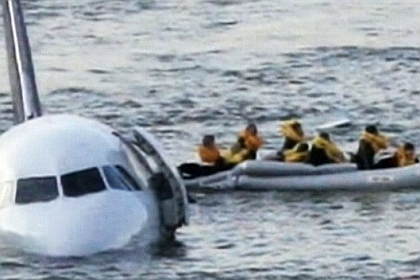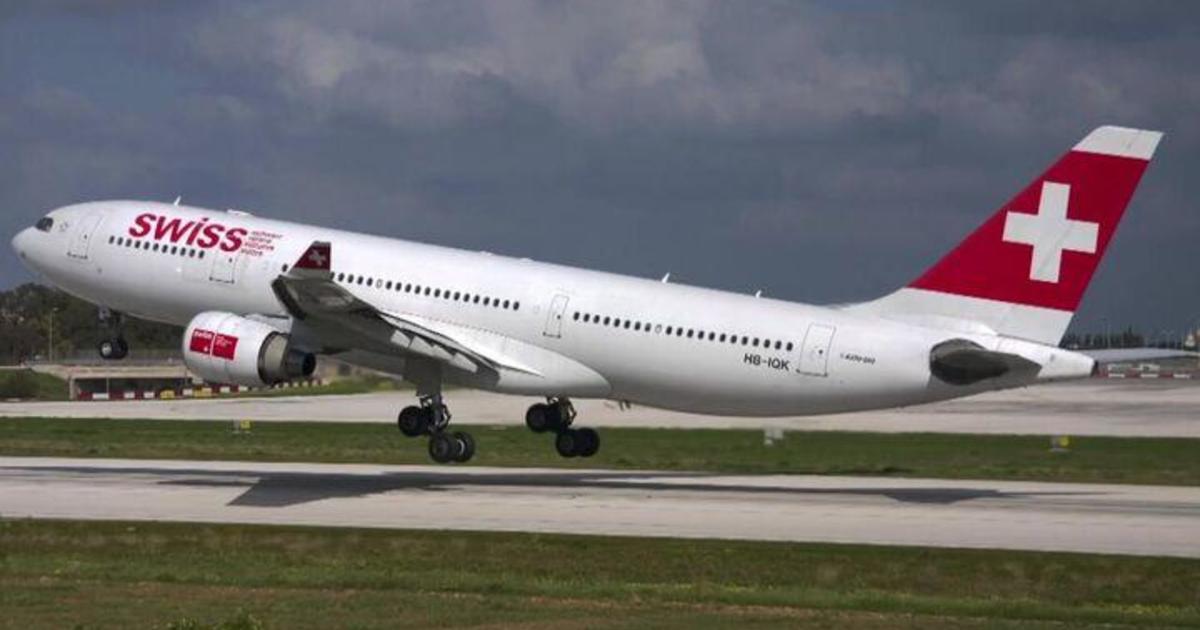Looking Back: TRIUMPH SNATCHED FROM JAWS OF TRAGEDY
EDITOR'S NOTE: The following story appeared on WCBSTV.com on Jan. 15, 2009.
Flock Of Geese Said To Have Caused Both Engines To Blow
Passenger: 'Pilots Said We Had To Brace For A Hard Impact; That's When Everyone Started Saying Prayers'
By STEVE FINK, WCBSTV.com
A US Airways airplane crashed into the Hudson River on Thursday afternoon after geese apparently entered the engines causing them to malfunction just minutes after takeoff, CBS 2 has learned.
Incredibly, every single passenger and crew member was rescued from the frigid waters thanks to an absolutely extraordinary and perfectly executed emergency landing procedure by the pilots.
"We've had a miracle on 34th Street, now we've had a miracle on the Hudson," said Gov. David Paterson.
Officials tell CBS 2 the airplane is Flight 1549, an Airbus 320 that took off from La Guardia Aiport and was headed to Charlotte, N.C. There are reports that there were 155 passengers on board, with two pilots and three flight attendants. It went down around 3:27 p.m.
Fire officials reported at least 78 injuries in the crash.
Survivors recalled the terrifying flight that lasted just a few minutes.
"About three or four minutes into the flight -- I was sitting in 22A -- the left engine just blew, fire and flames came out of it, I was looking right at it because I was sitting right there, and it just started smelling a lot like gasoline. A couple minutes after that the pilots said we had to brace for a hard impact, and that's when everyone started saying prayers," a passenger on the flight told CBS 2.
Officials believe a "double-bird strike" caused the plane to go down, meaning two birds entered the engine, completely incapacitating them. In this case, it's believed geese were the cause after a large flock apparently flew in front of the plane at the time of the strike.
Both engines were disabled, making it likely that geese entered each engine. U.S. Airways officials said it was too early to speculate on the cause of the crash.
Pilots reported the double-bird strike about 30 to 45 seconds after takeoff and had hoped to turn around and return to La Guardia. The controller sent the aircraft back toward LaGuardia, but the pilot saw Teterboro Airport below, and asked to land there. The controller then lost contact with the captain.
About 50 percent of bird strikes damage engines, CBS 2 learned.
Mayor Michael Bloomberg met with the heroic pilot afterward, believed to be 57-year-old Chesley B. "Sully" Sullenberger, according to online reports.
"The pilot did a wonderful job," Bloomberg said, adding that the captain would not discuss any details of the crash. "He was very careful in what he talked about and I think that's the kind of training you'd expect from a veteran pilot."
Bloomberg said Sullenberger walked the aisles twice after all passengers were rescued, even with water entering the plane, to make sure everyone was out.
Witnesses on the ground could see the plane's engines give out.
"It was just going down further and further and further and then all of a sudden it was gone," witness Peter Chinchino told CBS 2. "I'm shaking, it was crazy. I couldn't believe what I was seeing. There was nothing wrong with the plane, it wasn't wobbling, there was no smoke coming out of it!"
Passengers could be seen standing on the wing of the plane and entering rescue boats and a rescue ferry almost immediately after it crashed. Hundreds of firefighters, police officers, and Port Authority officers responded to the scene. Two crews of divers were also sent to the scene, and the most urgent part of the rescue operation was over by 4:20 p.m.
Though rescuers were able to evacuate every passenger from the plane safely, many reportedly suffered various injuries. One passenger said he saw a woman who he thought may have lost her leg in the crash.
The passengers were taken to St. Vincent's Hospital, St. Luke's-Roosevelt Hospital, and Weehawken Hospital for treatment.
According to a radar image of the flight, the plane was in air for about three minutes before it went down. It had reached a maximum altitude of 3,200 feet before it began descending. The last reported air speed was 172 mph. It went down around 46th Street in Manhattan near the USS Intrepid, though the fuselage eventually came to a rest around 23rd Street.
The plane eventually came to a rest in the water by the USS Intrepid, before drifting south on the Hudson and stopping at Battery Park, by Ground Zero, ironically. The NTSB is assembling a team of 20 to examine every square inch of the plane.
Experts say the pilots conducted a very controlled emergency landing after the engines went out, likely why the plane was able to remain upright as it landed and remained one piece.
"You have compromised engines, you don't have much altitude, you don't have much speed…it looks like a remarkable effort," said CBS News Analyst Bob Orr.
"The pilot deserves the Congressional Medal of Honor," said Sen. Chuck Schumer (D-NY). "They did an amazing and miraculous job."
Winds likely were not a factor in the crash. "Winds were blowing at about 15 miles per hour, which wouldn't affect a plane of this size," said CBS 2's Lonnie Quinn.
Temperatures at the time of the crash in the city were just about 20 degrees, with the water temperature about 40 degrees. According to Dr. Max Gomez, a person in 40 degree water will likely lose consciousness after 30 minutes.
The FBI is reporting that there is no indication that terrorist activity was involved in the crash. The Transportation Security Administration also said they did not believe the crash was security-related.




